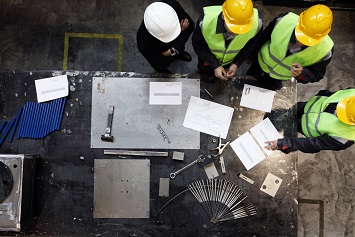At Safety 2019, the annual conference of the American Society of Safety Professionals, taking place June 9–12 at the Ernest N. Morial Convention Center in New Orleans, Kristen Bell of the Krause Bell Group delivered a session titled “BBS, HOP, Leadership, & Culture: How Safety Improvement Really Works.”
Safety professionals have a huge menu of programs and strategies for improving occupational safety and health to choose from, from regulations and procedures to behavior-based safety and risk assessment. But what makes a given safety intervention effective at reducing risk, Bell emphasized, is the degree to which it is supported by leadership, implemented using effective systems, and sustained through the organization’s culture.
Three-Step Process
Leadership sets the tone, Bell contended, and without leadership support, a safety improvement has a much lower chance of success. Leaders set improvement in motion. They own the systems that influence behavior and motivations throughout the organization and shape the culture. Leaders also have the authority to make the critical decisions regarding necessary purchases, procedural changes, and other essential resources for a safety initiative.
Once leadership has made key decisions to initiate a safety improvement initiative, risk-reduction mechanisms and programs can be selected and implemented. However, as Bell noted, programs, by themselves, don’t reduce risk; people do.
Bell stated that risk-reduction mechanisms must serve two functions to be effective. First, there must be mutual engagement between senior leadership and frontline workers. This engagement requires an ongoing dialogue. Workers must understand the value and the reasons behind safety initiatives, as well as the organization’s level of risk tolerance. For their part, leaders need to grasp the level of risk in the context of how work at the organization actually occurs—not only what the written procedure states or how a task would be completed in an ideal world.
Second, effective mechanisms must lead to strategic risk reduction. Data is key to meeting this goal. Data should be collected from a variety of sources and across multiple categories of risk. Through analysis of this data, organizations can identify the highest-priority risks to target for safety improvements.
While leadership sets the tone and mechanisms reduce risk, culture sustains improvement, said Bell. A strong culture of safety makes safety improvements stick and has the potential to spread engagement and other benefits beyond improved safety throughout the organization. By contrast, in an organization with a weak safety culture, safety improvements are likely to be temporary at best.
When attempting to improve safety outcomes, many organizations are tempted to begin the process with programs or culture, Bell noted. However, programs and culture cannot change in a positive, sustained way without strong support from leadership. Thus, for a successful improvement strategy, leadership must buy in and support the initiative before the other key elements of safety improvement can unfold.
Evaluating Your Strategy
Bell shared the following list of questions to ask to evaluate an organizational improvement strategy:
- Leadership
- Do leaders interact in ways that inspire, encourage, and build credibility?
- Do leaders understand injury causation and prevention?
- Do leaders understand how their actions and decisions impact risk?
- Risk reduction mechanisms
- Are the targeted risks improving?
- Are outcome measures continuously improving?
- Are people broadly engaged?
- Sustaining mechanisms
- Does the organizational culture support safety?
- Is the governance for safety functioning well?
- Do organizational systems support or undermine safety improvement? Do they recognize and reward people for the right things?


